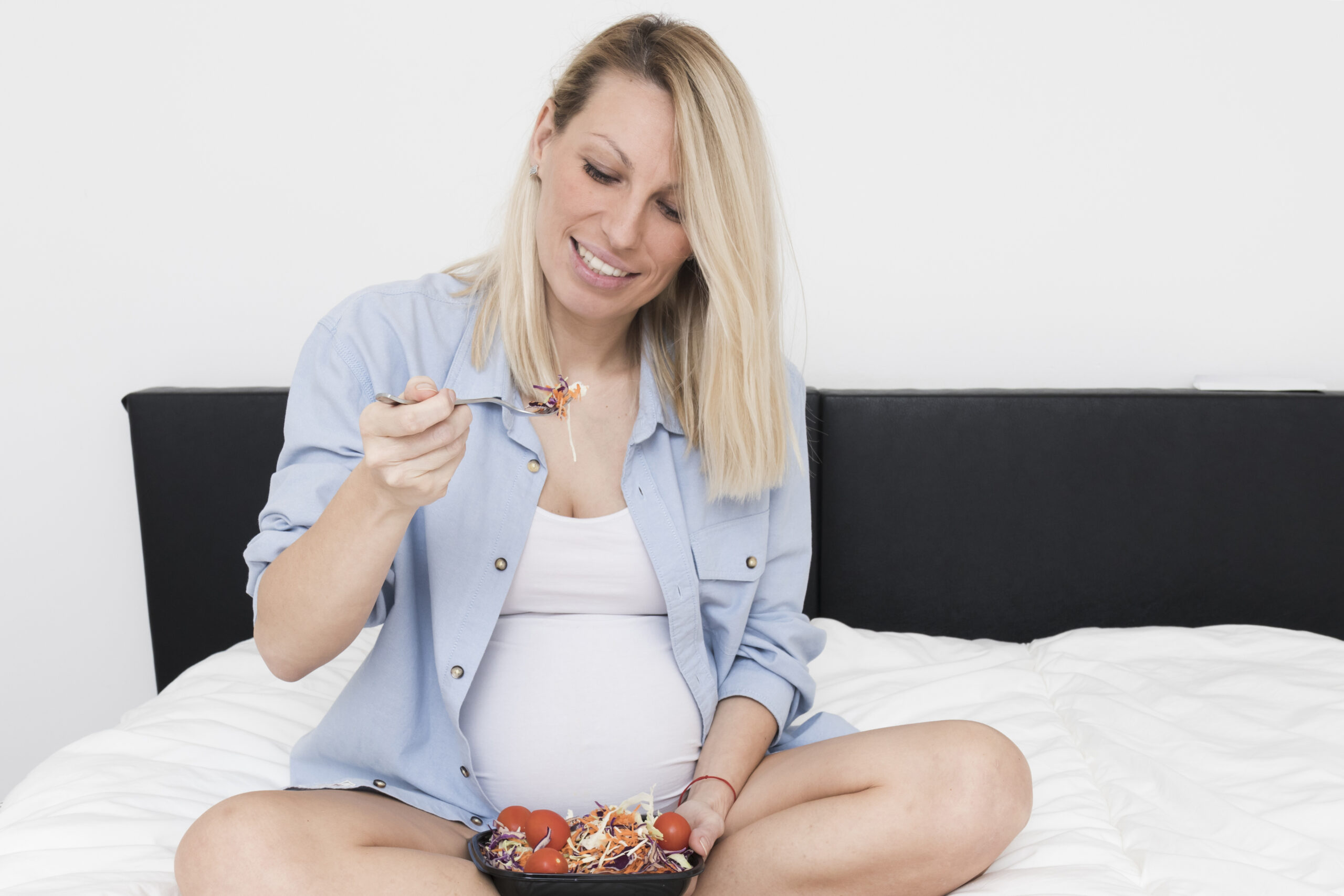Pregnancy is a beautiful journey, but it also comes with a lot of misinformation. Many myths have been passed down through generations, causing confusion among expecting mothers. Let’s debunk some common pregnancy myths with real facts.
1. Myth: You Should Eat for Two
Fact: While pregnancy increases nutritional needs, it doesn’t mean you should double your food intake. Overeating can lead to excessive weight gain, increasing the risk of gestational diabetes and high blood pressure. Instead of eating more, focus on consuming nutrient-dense foods like lean proteins, whole grains, fruits, and vegetables. The key is quality over quantity. During the second and third trimesters, an additional 300-500 calories per day is generally recommended. Staying active and making healthy food choices ensures both mother and baby receive proper nutrition.
2. Myth: Morning Sickness Only Happens in the Morning
Fact: Morning sickness can occur at any time of the day. Nausea and vomiting during pregnancy are caused by hormonal changes, particularly rising levels of hCG (human chorionic gonadotropin). Some women experience it in the evening or even throughout the day. While morning sickness is common in the first trimester, some may continue to feel queasy into the second trimester. Eating small, frequent meals, staying hydrated, and avoiding strong smells can help manage symptoms. Ginger tea or crackers may also provide relief. If nausea is severe and persistent, consulting a doctor is essential, as extreme cases can lead to dehydration and weight loss.
3. Myth: You Can’t Exercise During Pregnancy
Fact: Exercise is not only safe but also beneficial during pregnancy. Moderate activities like walking, swimming, and prenatal yoga can improve circulation, reduce stress, and help with labor preparation. Regular physical activity also helps manage pregnancy weight gain and lowers the risk of complications like gestational diabetes. However, high-impact activities, contact sports, and exercises that involve lying flat on the back after the first trimester should be avoided. Always consult with a healthcare provider before starting or modifying an exercise routine to ensure safety for both mother and baby.
4. Myth: Heartburn Means Your Baby Will Have Lots of Hair
Fact: While many pregnant women experience heartburn, it’s not a reliable indicator of how much hair a baby will have. Heartburn occurs due to hormonal changes and the growing uterus putting pressure on the stomach, causing acid reflux. Some studies suggest a correlation between pregnancy hormones and baby hair growth, but heartburn is more likely a symptom of digestion changes rather than a predictor of hair volume. Eating smaller meals, avoiding spicy and fatty foods, and sleeping with an elevated head position can help alleviate discomfort.
5. Myth: You Should Avoid All Seafood
Fact: Not all seafood is harmful during pregnancy. While high-mercury fish like shark, swordfish, and king mackerel should be avoided, low-mercury options like salmon, shrimp, and sardines are safe and beneficial. Fish provides essential omega-3 fatty acids, which are crucial for the baby’s brain and eye development. Pregnant women can safely consume up to 12 ounces (about two servings) of low-mercury fish per week. Cooking seafood properly and choosing fresh, high-quality sources is key to minimizing any potential risks.
6. Myth: You Should Avoid Caffeine Entirely
Fact: Moderate caffeine intake is generally considered safe during pregnancy. Most health experts recommend limiting caffeine to 200 mg per day, which is about one 12-ounce cup of coffee. Excessive caffeine consumption can increase the risk of low birth weight and preterm labor, but a small amount is unlikely to cause harm. If you’re a coffee lover, switching to decaf or opting for herbal teas can help you enjoy warm beverages while reducing caffeine intake.
7. Myth: Pregnancy Always Makes You Glow
Fact: While some women experience a pregnancy glow due to increased blood circulation and oil production, others may struggle with skin issues like acne, melasma, or dryness. Hormonal fluctuations affect every woman differently. Proper skincare, hydration, and sun protection can help manage pregnancy-related skin changes.
8. Myth: You Shouldn’t Dye Your Hair While Pregnant
Fact: Hair dye chemicals are absorbed in minimal amounts through the skin and are unlikely to harm the baby. Most doctors suggest waiting until after the first trimester and using ammonia-free dyes. If concerned, opting for highlights or natural coloring alternatives can reduce direct scalp exposure.
9. Myth: Sleeping on Your Back is Always Dangerous
Fact: While sleeping on the left side is ideal for circulation, occasional back sleeping is not immediately harmful. However, in later pregnancy, back sleeping can compress major blood vessels, leading to dizziness and reduced blood flow to the baby. Using a pregnancy pillow to maintain a comfortable side position is recommended.
10. Myth: Spicy Food Can Induce Labor
Fact: There’s no scientific evidence that spicy food triggers labor. While it may cause digestive discomfort, labor induction is primarily controlled by hormones and baby readiness. If you enjoy spicy food, there’s no harm in eating it, but don’t expect it to speed up delivery.
By separating facts from myths, expecting mothers can make informed decisions for a healthy pregnancy. Always rely on medical advice rather than old wives’ tales for the best care!











